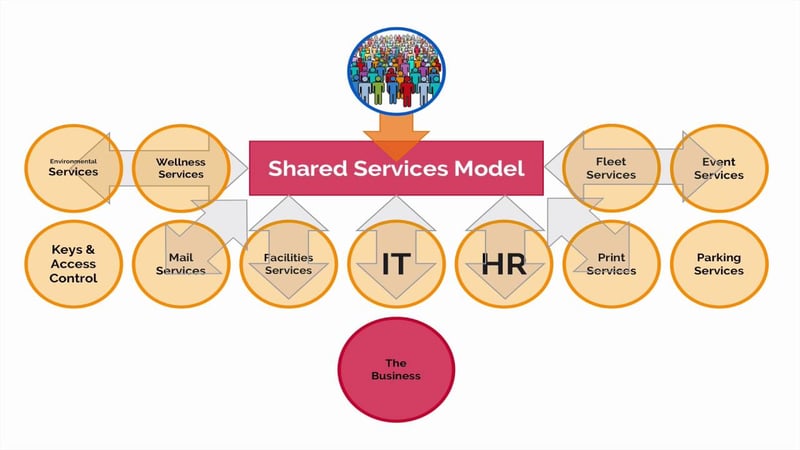Which Of The Following Is True About A Shared Service Organization?
What Differentiates Shared Services from Centralization? Shared Services has the mindset of a business and views the residue of the organisation as their customers. Every bit a service organisation, their accountabilities are delivering value (balancing cost and service levels), equally well as identifying means of farther leveraging their operating model. The operating model is built on three primary capability levers: People, Process, and Technology. While centralizing the services may be a component of Shared Services, the broader objective is to proceeds efficiencies beyond consolidation through a methodology of continuous improvement that results in more efficient and standardized processes, with much of the activity automated through enabling technology. By and large, Centralized Services tend to exist heavily focused on compliance and control while Shared Services have added accountable of value creation through a leveraged model likewise equally managing to agreed service levels. What are some of the Principal Benefits of a Shared Services Model? What has been the Evolution of Shared Services? The typical development of a Shared Services organization has followed a track similar to the one beneath:
Is there a Divergence between Shared Services and Business organization Services? As Shared Services organizations matured and continued to integrate broader services that crossed front, middle, and back office, as well as included decision support services, many integrated Shared Services organizations re-branded themselves equally Business Services. Much of this re-branding was a issue of overcoming existing impressions that Shared Services related primarily to transactional activities as it did in its before stages. Today, many Shared Services organizations are providing college-level services that would be considered by some every bit Business Services and there are many Business concern Services organizations that provide only transactional services. Where Does Outsourcing Fit in to the Equation? Outsourcing spans from a big strategic visitor initiative to a purely tactical sourcing decision for selected activities. Companies that would like to move to a model that brings the benefits of Shared Services chop-chop but lack adequate internal resources (some combination of man, applied science, capital) may choose a strategic "lift and shift" strategy. This can bring large immediate and guaranteed benefits to the visitor. Outsourcing providers are commonly located in low-cost regions then benefits come up primarily through labor arbitrage, every bit well as through gaining greater scale from the provider. Companies that opt for a "Lift and Shift" solution may accept a Shared or Business Services arrangement that will oversee the provider and keep to piece of work on process standardization and optimization in conjunction with their outsourcing partner. Companies that generally have had initial success with a captive Shared Services arrangement tend to view outsourcing as a selective tactical sourcing decision. These are usually more mature Shared Services organizations or those that accept the resources and scale to improve their current model internally through the capability levers of People, Process, and Technology. The timeline for benefits realization is usually slower, merely provides greater value cosmos over time every bit activities can be "improved and moved" when the optimal fourth dimension is determined, if moved at all. Detailed methodologies for end-to-end procedure improvement are critical for these Shared Services organizations, as well as one or more outsourcing business organization partners who are prepare and willing to integrate the activities while the Shared Services organisation shifts the sourcing seamlessly from internal resources to an external provider. With the proliferation of excellent outsourcing providers, information technology is critical that a company and their Shared Services organization cull their sourcing strategy wisely depending primarily on an assessment of their current country of capability levers also as their economical needs (immediate brusk-term return versus longer-term balance benefits). The all-time-case scenario is to have the choice of multiple delivery models using both internal and external resources and choosing what is all-time for a given set of circumstances and objectives. What practise the terms Captive, On-Shore, Near-Shore, and Offshore refer to? One of the benefits of Shared Services is the flexibility of existence able to move work where information technology can be best sourced based on a combination of variables (cost, service levels, and skills required, etc.). Regardless of where the work is located and who the resource are employed past, it is critical that Shared Services maintain accountability for service delivery, toll, and overall process buying and be the operating unit responsible for overall coordination and results. 
Which Of The Following Is True About A Shared Service Organization?,
Source: https://insights.btoes.com/what-is-shared-services
Posted by: schaffersinut1943.blogspot.com


0 Response to "Which Of The Following Is True About A Shared Service Organization?"
Post a Comment